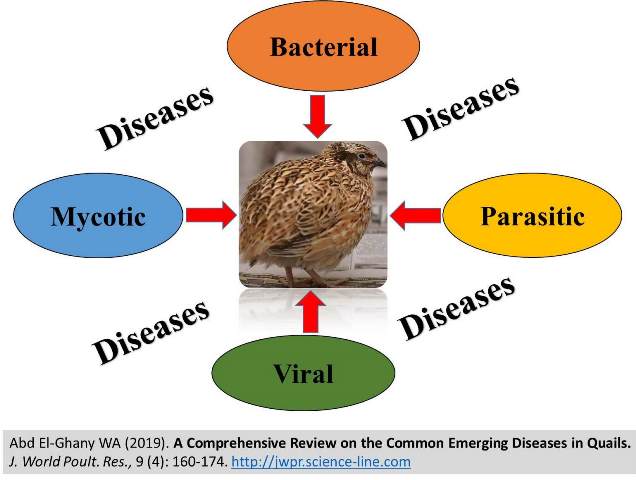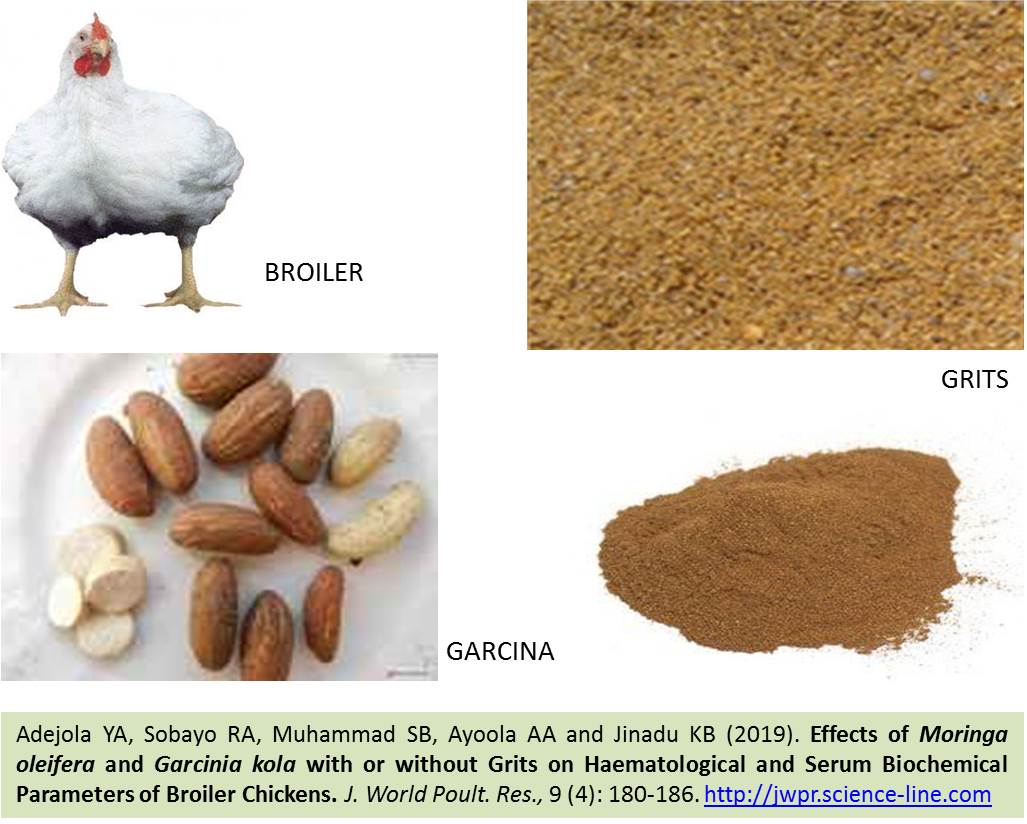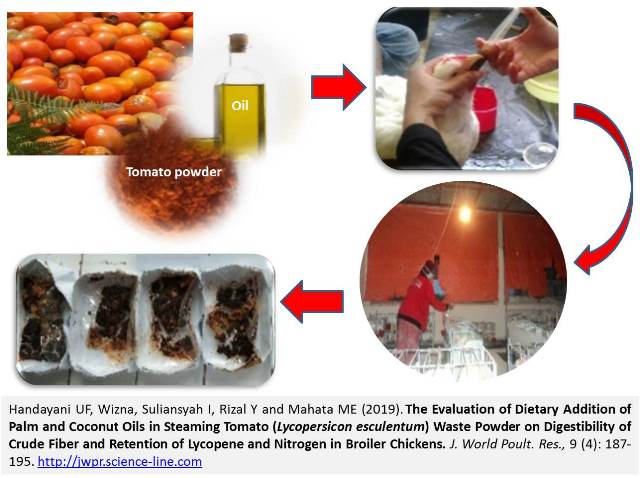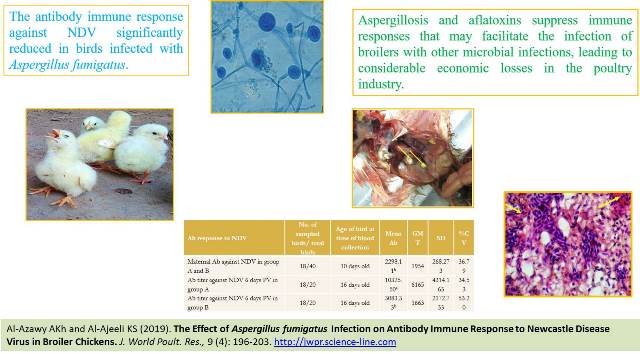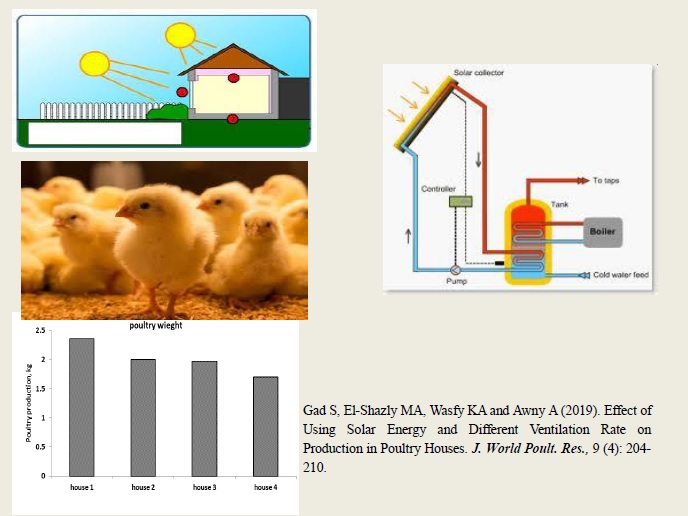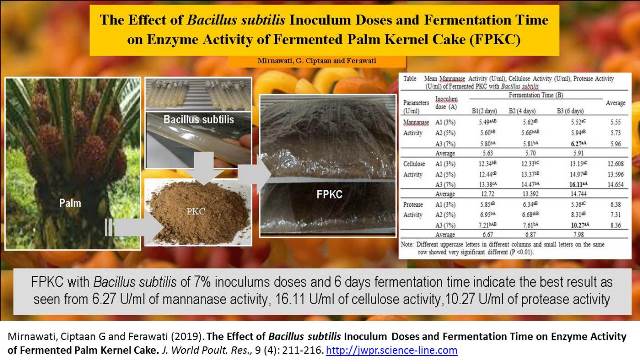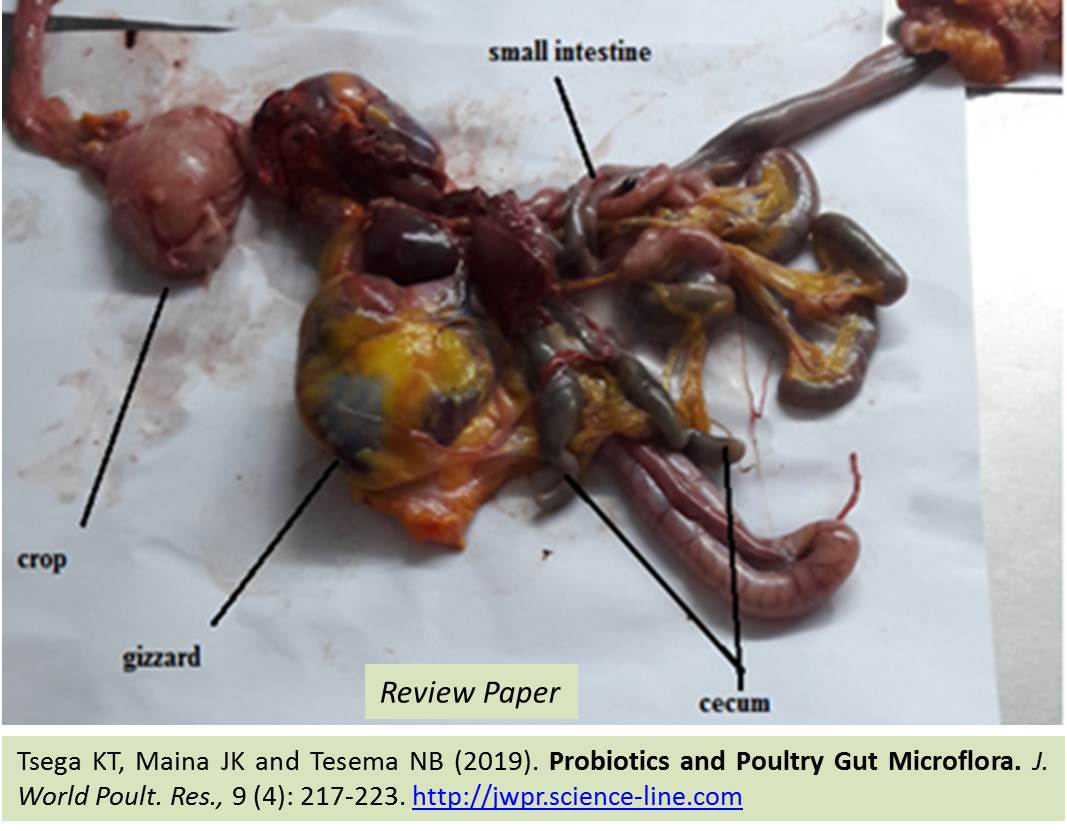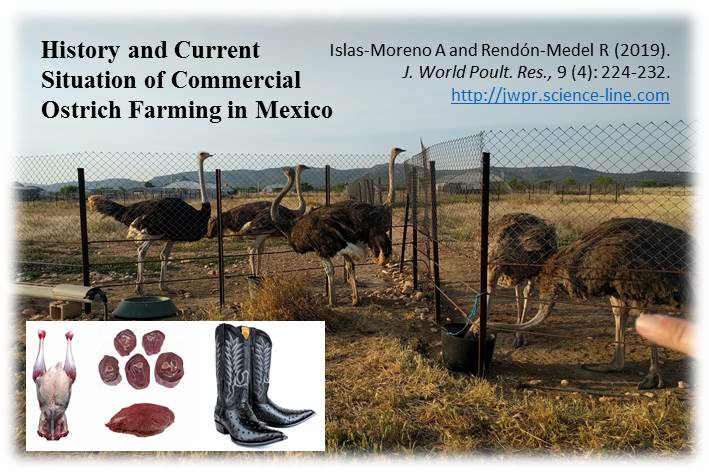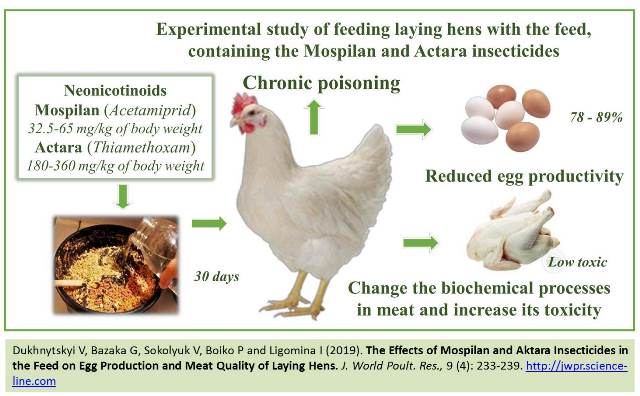Previous issue | Next issue | Archive
Volume 9 (4); December 25, 2019 [Booklet] [EndNote XML for Agris]![]()
A Comprehensive Review on the Common Emerging Diseases in Quails.
Abd El-Ghany WA.
J. World Poult. Res. 9(4): 160-174, 2019; pii: S2322455X1900021-9
DOI: https://dx.doi.org/10.36380/jwpr.2019.20
ABSTRACT: The poultry industry is considered an important sector that meets the great demand for protein sources all over the world. Now, quails are recognized as promising and important alternative species with many advantages over other poultry species. In many countries around the world, quail meat has achieved great popularity as a good source of protein and other important nutrients. However, there are some limitations and challenges to quails production. One of them is the susceptibility to some viral, bacterial, mycotic and parasitic diseases that can adversely affect quails. Many of the diseases that affect quails cause severe economic losses in quail industry due to a decrease in growth performance, poor feed conversion, reduction in hatchability, increased mortality and treatment costs. There are limited research and literature dealing with different disease and conditions affecting quails. Therefore, the aim of this work was to present a comprehensive review of the most important emerging diseases affecting quails worldwide.
Keywords: Bacteria, Virus, Mycosis, Myctoxicosis, Parasites, Quail
[Full text-PDF] [XML] [Crossref Metadata] [Google Scholar]
Systematic Program for Destroying of Flies’ Population in Poultry Farm under Battery Cage Management in Russia.
Safiullin RT, Safiullin RR and Kachanova EO.
J. World Poult. Res. 9(4): 175-179, 2019; pii: S2322455X1900022-9
DOI: https://dx.doi.org/10.36380/jwpr.2019.21
ABSTRACT: Favorable conditions for development, reproduction, and accumulation of large amounts of zoophilous flies in commercial poultry farms are caused by incomplete compliance with veterinary and sanitary rules for growing in cage facilities. The purpose of the study was to test a systematic insecticidal program for destroying flies’ populations using adulticide and larvicide drugs in poultry farms under battery cage management. The number of imago flies in hen houses was dynamically evaluated using flypapers, six flypapers in each hen house, situated in different levels above the floor. Flypapers were removed and the number of stuck insects was counted. The number of larvae was evaluated in dynamics by specimen testing from the floor area 10x10 cm, with weight of 3-5 g. The Quick Bayt WG 10% was applied to destroy the imago of flies. Baycidal® WP 25% was used against larvae of flies. Complex insecticide program Quick Bayt WG 10% + Baycidal® WP 25% provided the opportunity to destroy flies, with a significant difference in intensefficacy, (98.3 % for adult flies and 99.8 % for larvae). Furthermore, this program had a positive impact on economic indicators of meat production of broilers. The present study demonstrated high preventive efficacy and economical efficacy of complex program against flies under battery cage broiler management.
Keywords: Adulticide, Economical Efficacy, Fly Larvae, Intensefficacy, Larvicide, Zoophilous Flies
[Full text-PDF] [XML] [Crossref Metadata] [Google Scholar]
Effects of Moringa oleifera and Garcinia kola with or without Grits on Haematological and Serum Biochemical Parameters of Broiler Chickens.
Adejola YA, Sobayo RA, Muhammad SB, Ayoola AA and Jinadu KB.
J. World Poult. Res. 9(4): 180-186, 2019; pii: S2322455X1900023-9
DOI: https://dx.doi.org/10.36380/jwpr.2019.22
ABSTRACT: The use of antibiotics as growth promoters in food animals has been banned due to the residual effects on final consumers which could lead to human health issues. The aim of the present study was to investigate the effects of two herbal feed additives with or without grits on hematological and serum biochemical parameters of broiler chickens. One hundred and forty-four, one-day-old, Cobb 500 broiler chicks were randomly assigned into six treatments (24 birds per treatment) with three replicates (eight bird per replicate). Six dietary treatments were formulated with the inclusion of Moringa oleifera Leaf Meal (MOLM), Garcinia kola Seed Meal (GKSM) and grits. The experimental rations contained diet without MOLM, GKSM and grits which served as treatment 1 (control), diet with MOLM at 1000ppm (treatment 2), diet with GKSM at 1000ppm (treatment 3), diet with grits at 1000ppm (treatment 4), diet with MOLM at 1000ppm + grits at 1000ppm (treatment 5) and diet with GKSM at 1000ppm + grits at 1000ppm (treatment 6). Blood samples were collected on 28 and 56 days of age for hematological and biochemical analysis. Data were subjected to analysis of variance in a completely randomized design. At the starter phase, red blood cells (1.15 ×1012 L) and white blood cells were significantly lowest in birds of first treatment. The birds that received treatment 6, had the highest glucose (131.50 g/dl) and high-density lipoprotein level (58.50 mg/dl). At the finisher phase, the lowest white blood cell count (10.95 ×109/L) and lymphocytes (60%) were recorded in treatment 6. Birds in treatment 3 indicated the lowest urea (2.05 mg/dl) and triglyceride (94.50 mg/dl). It can be concluded that diet supplemented with GKSM at 1000 ppm, increased high-density lipoprotein, and reduced triglyceride and low-density lipoprotein levels in serum of broiler chickens.
Keywords: Blood parameters, Feed additive, Garcinia Kola, Grit, Moringa oleifera
[Full text-PDF] [XML] [Crossref Metadata] [Google Scholar]
Research Paper
The Evaluation of Dietary Addition of Palm and Coconut Oils in Steaming Tomato (Lycopersicon esculentum) Waste Powder on Digestibility of Crude Fiber and Retention of Lycopene and Nitrogen in Broiler Chickens.
Handayani UF, Wizna, Suliansyah I, Rizal Y and Mahata ME.
J. World Poult. Res. 9(4): 187-195, 2019; pii: S2322455X1900024-9
DOI: https://dx.doi.org/10.36380/jwpr.2019.23
ABSTRACT: Lycopene is a powerful antioxidant present in tomatoes and other vegetables and fruits. Present research was carried out to evaluate lycopene and nitrogen retention and crude fiber (CF) digestibility of steaming tomatoes waste powder which was combined with oil. Tomatoes waste in this experiment were local fresh tomato rejected from tomato field around West Sumatera province, Indonesia. The experimental factors were included the type of oil (palm and coconut oils) and dosage of oils (0.25, 0.5, 0.75, 1, and 1.25 %), and each treatment was replicated three times. The results indicated there was an interaction between the type of oil and dosage of oil on lycopene retention, and CF digestibility, while the type of oil and dosage of oil affected lycopene retention significantly. The dosage of oil also influenced lycopene retention, nitrogen retention, CF digestibility significantly. The addition of coconut oil in steaming tomato waste powder increased lycopene and nitrogen retention, and CF digestibility higher than the addition of palm oil to steaming tomato waste powder in broiler chickens. The lycopene and nitrogen retention, and CF digestibility of steaming tomato waste powder added 0.5% coconut oil was the best level for lycopene and nitrogen retention, and CF digestibility in broiler chickens.
Keywords: Coconut oil, Crude fiber digestibility, Lycopene retention, Nitrogen retention, Palm oil, Tomatoes waste
[Full text-PDF] [XML] [Crossref Metadata]
The Effect of Aspergillus fumigatus Infection on Antibody Immune Response to Newcastle Disease Virus in Broiler Chickens.
Al-Azawy AKh and Al-Ajeeli KS.
J. World Poult. Res. 9(4): 196-203, 2019; pii: S2322455X1900025-9
DOI: https://dx.doi.org/10.36380/jwpr.2019.24
ABSTRACT: Aspergillus fumigatus infection might predispose birds to other respiratory infections with other pathogens such as Newcastle Disease Virus (NDV). This study aimed to investigate the incidence of Aspergillus fumigatus in commercial farms and its histopathological effects on respiratory organs and to evaluate the immunosuppressive effect of aspergillosis on NDV vaccinated birds. Aspergillus fumigatus was isolated from feedstuff and broilers in farms with respiratory manifestation. Twenty NDV-vaccinated broiler chickens of 10 days old were experimentally infected by feeding on feedstuff contaminated with Aspergillus fumigatus. Twenty vaccinated broilers but not fed the contaminated diet were used as the control group. Clinical signs, histopathological changes, NDV antibody levels in infected birds were recorded. Clinically, infected birds showed respiratory distress, dyspnea, gasping, ruffled feathers, green watery diarrhea, anorexia, lethargy, and unilateral drooping of wing. Histopathological changes were observed as disseminated granulomatous foci in the affected lungs, with caseous necrosis and leukocytes infiltration. The antibody immune response against NDV significantly reduced in infected birds compared with that of non-infected broilers. It is concluded, that Aspergillus fumigatus infection suppresses the immune responses and predisposes the broilers to other microbial infections, leading to considerable economic losses in the poultry industry.
Keywords: Aspergillus fumigatus, Immunosuppression, NDV vaccine
[Full text-PDF] [XML] [Crossref Metadata] [Google Scholar]
Effect of Using Solar Energy and Different Ventilation Rate on Production in Poultry Houses.
Gad S, El-Shazly MA, Wasfy KA and Awny A.
J. World Poult. Res. 9(4): 204-210, 2019; pii: S2322455X1900026-9
DOI: https://dx.doi.org/10.36380/jwpr.2019.25
ABSTRACT: The main purpose of the present study was to find an alternative source for traditional energy to provide the energy requirements in the poultry industry. The present study was conducted in four poultry houses with different heating systems (solar and conventional) and ventilation rates located in El-Sharkia Governorate, Egypt, during June and July 2018. In this study, it was found that productivity increased by increasing the ventilation rate, where productivity reached 2.3 kg when using a solar heating system with a ventilation rate every two minutes. Productivity decreased in poultry houses with a conventional heating system and was 2 kg in ventilation rate every 2 minutes, and 1.8 kg in the ventilation rate every four minutes. The level of ammonia was also reduced with the ventilation rate every two minutes. Concentrations of ammonia ranged from 22 ppm at ventilation rate every two minutes to 28 ppm at the ventilation rate every four minutes. In addition, solar energy provided good levels of thermal requirements. It was demonstrated that solar energy as an alternative source to the conventional energy, is very efficient and can be applied on a large scale when combined with conventional electricity as a light source and within specified limits.
Keywords: Energy balance, Poultry production, Solar heating system, Ventilation
[Full text-PDF] [XML] [Crossref Metadata] [Google Scholar]
The Effect of Bacillus subtilis Inoculum Doses and Fermentation Time on Enzyme Activity of Fermented Palm Kernel Cake.
Mirnawati, Ciptaan G and Ferawati.
J. World Poult. Res. 9(4): 211-216, 2019; pii: S2322455X1900027-9
DOI: https://dx.doi.org/10.36380/jwpr.2019.26
ABSTRACT: Palm kernel cake (PKC) was by-product of palm oil industry and it had potential to be one of the poultry ration ingredient However, its utilization for poultry was still limited because of the β-mannan in PKC. In order to increase PKC utilization in poultry ration, fermentation process was done to remodeled β mannan by using Bacillus subtilis. This research conducted a study on the effect of Bacillus subtilis inoculum dose and fermentation time to increase the enzyme activity of FPKC by using CRD with 3 × 3 factorial and 3 replications. Factor A was 3 doses of inoculum Bacillus subtilis: 3%, 5%, and 7%. Factor B was fermentation times which contained: (1) 2 days, (2) 4 days, and (3) 6 days. Parameters used were enzyme activity of mannanase, protease, and cellulase in FPKC. Significant interaction was seen between inoculum doses of Bacillus subtilis and fermentation time. There was also a significant interaction on each of the inoculums dose of Bacillus subtilis and fermentation time on all of the enzyme activity. This study concluded FPKC with Bacillus subtilis of 7% inoculums doses and 6 days fermentation time indicate the best result as seen from 24.27 U/ml of mannanase activity, 10.27 U/ml of protease activity, 17.13 U/ml of cellulose activity of fermented PKC.
Keywords: Bacillus subtilis, Enzyme activity, Fermentation time, Inoculum doses, Palm Kernel Cake
[Full text-PDF] [XML] [Crossref Metadata]
Probiotics and Poultry Gut Microflora.
Tsega KT, Maina JK and Tesema NB.
J. World Poult. Res. 9(4): 217-223, 2019; pii: S2322455X1900028-9
DOI: https://dx.doi.org/10.36380/jwpr.2019.27
ABSTRACT: Poultry production is presently the most effective animal production industry and provides an excellent source of protein production worldwide. The poultry gastrointestinal microbiota includes commensal, mutualistic and pathogenic microbes. The relationship between host and gut microbiota can affect the balance of mutualism and pathogenicity. The imbalanced gut microflora caused by the incidence of disease, hygiene conditions, diet, management practices, and environmental stress affects the survival and productivity of chicken. Maintenance of the gut microbial composition is possible through the regulation of the gastrointestinal microbiota by suppressing the growth of pathogens. For many years, antibiotic growth promoters have been used to manage these problems. Nowadays, because of the emergence of antibiotic-resistant bacteria, other alternatives are being sought. Supplementation of probiotics as feed additives is considered to enhance chicken productivitity and to protect the gut from pathogen colonization and help to tolerate environmental stress. The goal of the present article was to review the poultry gastrointestinal microflora and probiotics role in the health and growth of poultry. In addition, this article focused on probiotic microorganisms and their potential characteristics.
Key words: Gastrointestinal microbiota, Poultry, Probiotics
[Full text-PDF] [XML] [Crossref Metadata]
History and Current Situation of Commercial Ostrich Farming in Mexico.
Islas-Moreno A and Rendón-Medel R.
J. World Poult. Res. 9(4): 224-232, 2019; pii: S2322455X1900029-9
DOI: https://dx.doi.org/10.36380/jwpr.2019.28
ABSTRACT: As in many other countries, in Mexico, the ostrich aroused the interest of public and private entities for its broad productive qualities and quality of its products. The objective of the present study was to describe the history of ostrich introduction in Mexico as a kind of commercial interest, from the arrival of the first birds to the current farms. In 1988 the first farm was established, then a series of farms of significant size were appearing, all of them focused their business on the sale of breeding stock, a business that was profitable during the heyday of the specie in the country (1998-2008). The main client was the government that acquired ostriches to distribute them among a large number of new farmers. When the introduction into the activity of government and private individuals was no longer attractive, the prices of the breeders fell and the sector collapsed because the farms were inefficient and the infrastructure and promotion sufficient to position the ostrich products were not produced on the national or export market. In 2016 it was known that about 30 farms remained in the activity, of which 20 were located and provided information for this study. The farms that remained in the activity continued with significant difficulties in terms of their productivity, however, they had managed to mitigate part of the problem by sharing production practices among themselves and going to their counterparts abroad through digital media. On the commercial side, they had managed to develop standardized products using maquiladora companies, and placed them in niche markets that paid for higher prices than those that are paid for conventional substitutes. In the case of ostrich, in Mexico and many other countries, the sector failed because the market demand response was overestimated and the farmers ventured into the activity without adequate knowledge bases, infrastructure, and institutional support. These findings could be referred to many other species of nascent interest.
Keywords: Emerging sectors, Exotic poultry, Niche market, Specialty livestock, Organization, Ostrich meat
[Full text-PDF] [XML] [Crossref Metadata] [Google Scholar]
The Effects of Mospilan and Aktara Insecticides in the Feed on Egg Production and Meat Quality of Laying Hens.
Dukhnytskyi V, Bazaka G, Sokolyuk V, Boiko P and Ligomina I.
J. World Poult. Res. 9(4): 233-239, 2019; pii: S2322455X1900030-9
DOI: https://dx.doi.org/10.36380/jwpr.2019.29
ABSTRACT: The current study was aimed to investigate the effects of feeding Mospilan and Actara insecticides on egg production performance and meat quality of laying hens. Experimental research was conducted in the laboratory of the Department of Pharmacology and Toxicology of the National University of Life and Environmental Sciences of Ukraine in 2015. The experiments were performed on five groups each consisting of seven chickens. The age of the chickens at the beginning of the experiment was 150 days. The birds were fed the granulated compound feed. In M1 and M2 groups, Mospilan at doses of 65 mg/kg and 32.5 mg/kg of body weight were added to the feed, respectively. In A1 and A2 groups, Actara at doses of 360 mg/kg and 180 mg/kg of body weight were added to the feed, respectively. Chickens of the control group were fed without the addition of insecticides to the feed. The feeding period lasted 30 days and finally, egg production performance, meat quality, and gross pathological changes were evaluated. Egg production rate in M1 and M2 groups in comparison to the control group decreased by 78.4 and 29.7%, respectively. Egg production rate in A1 and A2 groups reduced by 89.2% and 48.7% compared to the control group, respectively. Chickens in groups of receiving insecticides had pale skin and enlarged heart, also showed spot hemorrhages in mucous membranes of the glandular stomach and intestine, color heterogeneity of the lungs, and the liver was dark cherry in color with hemorrhage. In addition, the relative weights of internal organs decreased by 23-36% in experimental groups. In the experimental groups, the pH of meat decreased at day 4 post-slaughter, and the meat broth with the addition of 5% copper sulfate solution was slightly cloudy with flakes. The meat of birds from the experimental groups was low toxic. Extracts from chicken meat of the experimental groups caused pathological changes, inhibition of movements and death of 13-16% of Tetrahymena pyriformis infusoria. This study demonstrated that the presence of Mospilan and Aktara in feed reduced the egg production rate, caused chronic poisoning, changed biochemical processes in chicken meat and increased its toxicity.
Keywords: Chicken meat quality, Egg productivity, Insecticides Mospilan and Actara, Laying hens, Neonicotinoids.
[Full text-PDF] [XML] [Crossref Metadata] [Google Scholar]
Previous issue | Next issue | Archive
![]() This work is licensed under a Creative Commons Attribution 4.0 International License (CC BY 4.0).
This work is licensed under a Creative Commons Attribution 4.0 International License (CC BY 4.0).

